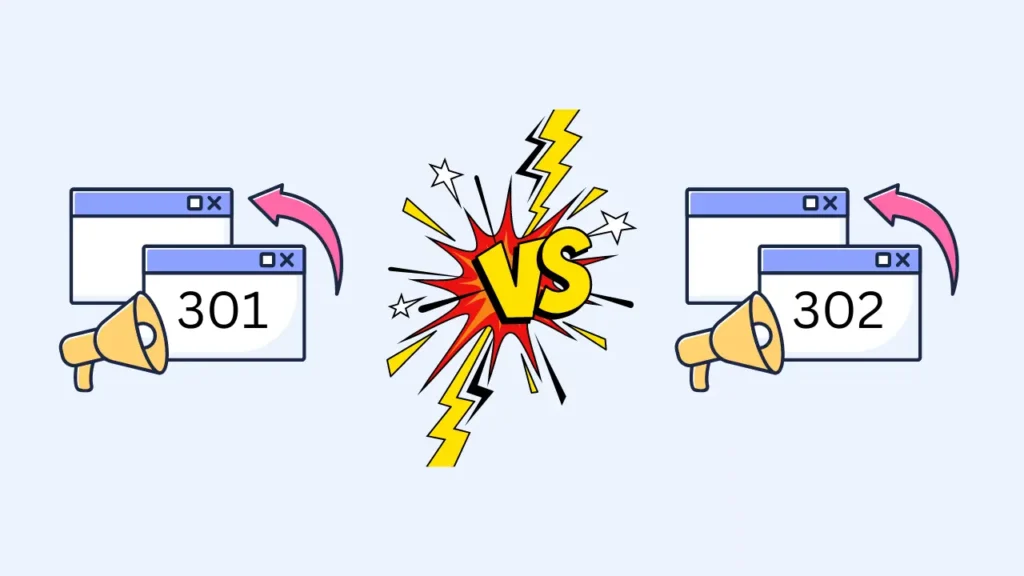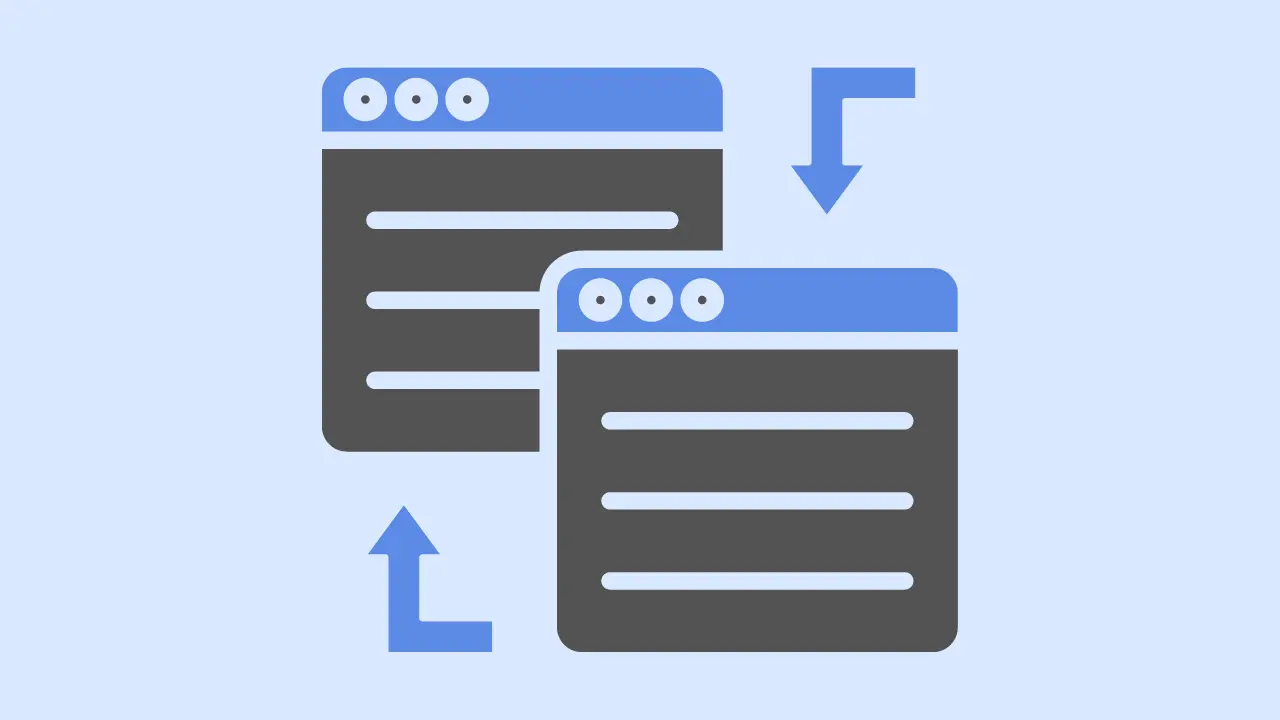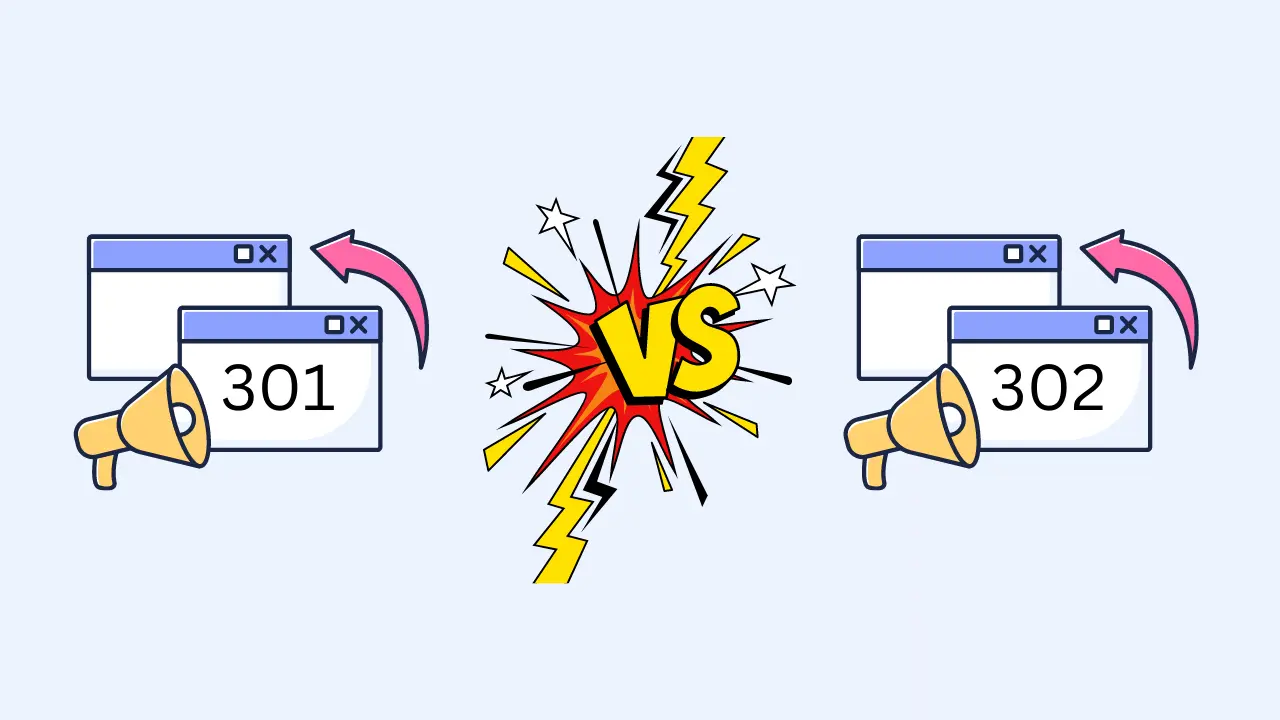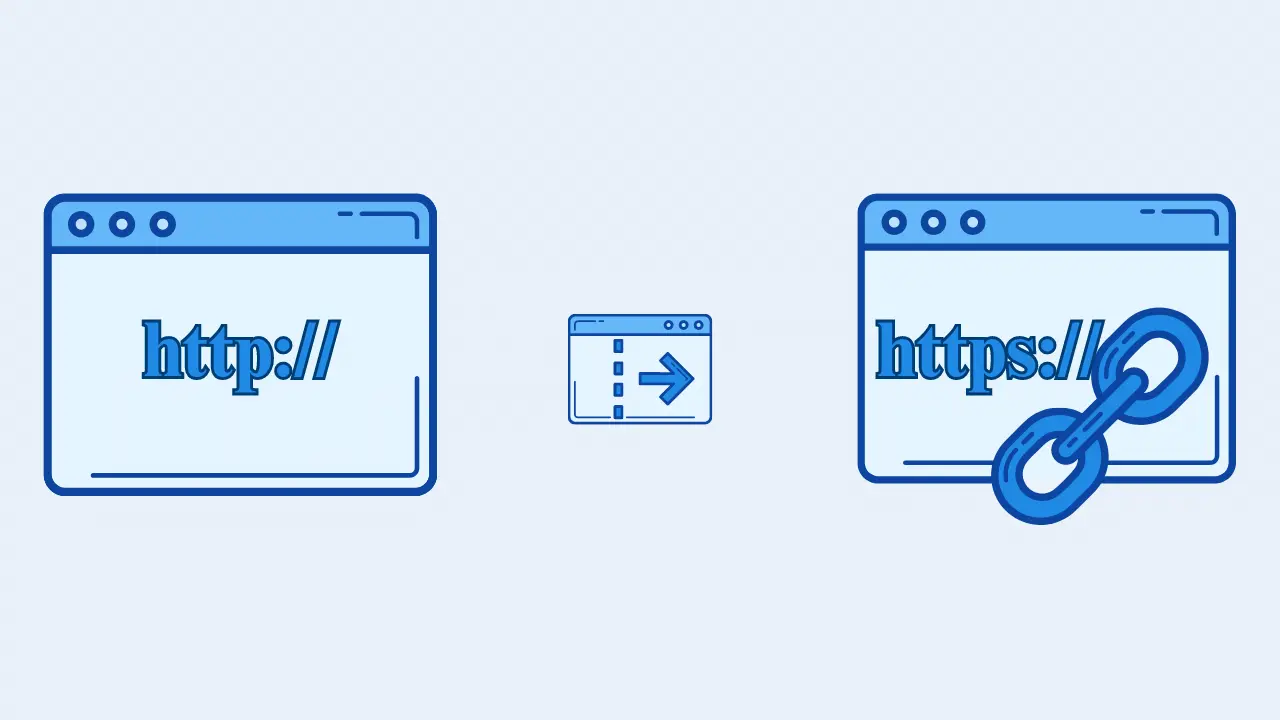310 vs 302 Redirect - All differences you need to know

Knowing the difference between a 301 and a 302 redirect is crucial for effective website management, primarily due to their distinct impacts on SEO.
A 301 redirect signifies a permanent move and transfers most of the original page’s ranking power to the new page, while a 302 indicates a temporary move without passing on the link equity.
Using the incorrect redirect can adversely affect your site’s search engine rankings, user experience, and performance, potentially causing confusion for users and loss of link equity.
Moreover, these redirects can influence your web analytics data, necessitating accurate understanding for correct interpretation and decision-making.
In this blog, I will cover all the important aspects & differences between 301 and 302 redirects.
What is 301 redirect?
A 301 redirect is a permanent redirect from one URL to another. It is a way to quickly let browsers and search engines know that an old URL has been permanently moved or replaced with a new one.
The “301” is the HTTP status code for this type of redirect. In most instances, the 301 redirect is the best method for implementing redirects on a website.
This method is particularly useful when you have redesigned your website, moved your domain, or changed the URL structure of your pages. It helps ensure that users and search engines are directed to the correct new location, and it can also help you to avoid duplicate content issues that could impact your site’s search engine optimization (SEO) negatively.
For SEO, a 301 redirect can help transfer the link equity or SEO value of the old URL to the new one, which can help maintain your site’s visibility in search engine results.
It’s important to note that while a 301 redirect does pass most of the SEO value, it may not always pass 100%. It’s generally better to update and maintain URLs when possible, rather than relying on redirects.
What is 302 redirect?
A 302 redirect is a temporary redirect from one URL to another. The “302” is the HTTP status code for this type of redirect.
This means that while the page is being redirected for now, the original URL is the one that should be kept in mind for the future. Search engines understand this to mean that they should keep the original URL in their index rather than replacing it with the new one.
A 302 redirect might be used in several situations, such as:
- A/B testing a new page to see how it performs, with the intention of possibly reverting back to the original page.
- Temporary redirection of a site or page for maintenance or updates, with the intention of bringing the original page back once the updates are completed.
- Ecommerce sites often use 302 redirects for time-sensitive or promotional content, intending to switch back to the original URL once the promotion ends.
From an SEO perspective, a 302 redirect does not pass the full value (link equity) from the original URL to the new one, as search engines treat it as a temporary change. This is why, for permanent URL changes, a 301 redirect is generally recommended instead.
301 vs 302 redirect - Head to head comparison
| Criteria | 301 Redirect | 302 Redirect |
|---|---|---|
| Meaning | Indicates that the page has been permanently moved to a new location. | Indicates that the page has been temporarily moved to a new location. |
| HTTP Status Code | HTTP status code for a permanent redirect. | HTTP status code for a temporary redirect. |
| SEO Impact | Passes most of the SEO value (link equity) from the old URL to the new one. | Does not pass the full SEO value from the old URL to the new one, as it's seen as temporary. |
| Indexing | Search engines replace the old URL with the new URL in their index. | Search engines keep the original URL in their index. |
| Use Case | Used when the change in URL is permanent, such as a site move or restructure. | Used when the change is temporary, such as for A/B testing, maintenance, or time-limited promotions. |
| Visitor's Bookmark | If visitors have bookmarked the old URL, a 301 redirect will take them to the new URL. The new URL should be bookmarked for future use. | If visitors have bookmarked the old URL, a 302 redirect will take them to the new URL, but the old URL should still work when the temporary redirect is removed. |
| Browser Behavior | The browser will cache the 301 redirect and will automatically go to the new URL in the future. | The browser will not cache the 302 redirect and will continue to request the original URL. |
| Link Equity Transfer | A 301 redirect transfers the majority of link equity (though not always 100%) to the new URL. | A 302 redirect does not pass the majority of link equity to the new URL. |
| Recommended for Permanent Changes | Yes, a 301 redirect is the recommended method for permanent URL changes. | No, a 302 redirect is not recommended for permanent URL changes. |
| Recommended for Temporary Changes | No, a 301 redirect should not be used for temporary URL changes. | Yes, a 302 redirect is the recommended method for temporary URL changes. |
| Impact on Page Authority | A 301 redirect can help maintain the page authority of the old URL as it signals a permanent move. | A 302 redirect might cause the page authority of the original URL to be diluted as search engines might still consider the original URL as valid. |
| Ideal For | Ideal for ensuring long-term traffic to a specific URL when the original page has been permanently moved or deleted. | Ideal for maintaining a page's presence even when its content needs to be temporarily replaced. |
| User Experience | As the browser caches the 301, it can provide a slightly faster user experience after the first redirect, as the browser goes directly to the new location. | As 302s are not cached, the browser has to respond to the server every time, which might cause a negligible delay, affecting user experience slightly. |
| Server Impact | Once a 301 redirect is set up, it needs less server resources as browsers cache the instruction. | As the 302 is not cached by browsers, the server has to handle the redirect each time, which might have a tiny impact on server resources. |
| Impact on Conversion Tracking | If improperly set up, 301 redirects can sometimes cause issues with tracking conversions in analytics tools as the redirect can "break" the tracking URL. | Since 302 redirects are temporary, if the original URL is used in conversion tracking, it should continue to work fine once the redirect is removed. |
When should you use 301 redirect?
A 301 redirect is a permanent redirect and should be used when a webpage has been permanently moved or removed. This is essentially an instruction that tells search engines that the page has moved permanently to a new URL. This type of redirect also transfers the “link equity” or SEO value of the original page to the new page, which can help to maintain your website’s search rankings.
Scenarios in which a 301 redirect should be used include:
- You’ve redesigned or restructured your website and some of your old URLs no longer exist.
- You’re merging two websites and want to make sure that links to outdated URLs are redirected to the correct pages.
- You’ve moved your site to a new domain, and you want to make the transition as seamless as possible.
- You want to consolidate duplicate pages on your website to improve SEO.
When should you use 302 redirect?
A 302 redirect is a temporary redirect and should be used when a webpage has been moved or changed temporarily, but you intend to bring the original page back at some point in the future.
A 302 redirect does not pass the original page’s link equity to the new location. Essentially, it is a way to redirect your site visitors without losing the ranking of the page.
Scenarios in which a 302 redirect should be used include:
- You’re redesigning or updating a webpage, but you want to temporarily send users to a different page.
- You’re conducting A/B testing to a webpage to determine the best layout or content.
- You have a seasonal product page that you want to redirect during off-season times, but will return to the original content when the season is relevant again.
Always remember, the correct use of 301 and 302 redirects is crucial for both user experience and SEO. Misusing these can lead to a drop in your website’s search rankings or confuse your site visitors.




